 |
 |
|
The main departure point into the Bahamas and into the Bermuda Triangle’s most enigmatic corner is the vacation Mecca of Miami, Florida. And nothing helps us to place the outback allure of the enigmatic Bahamas in perspective than contrasting it with this pleasure port of pleasure ports.
Flying out into the hazy tropics, our first view is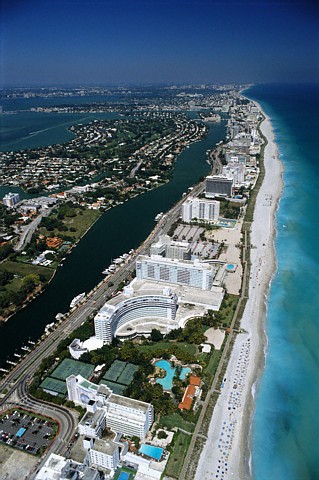 the antithesis of mystery: the condominiums, casinos, hotels and bustling sands of Miami Beach. Advancing lines of breaking surf soon fade to the deep blue Gulf Stream. This sea going freeway is dotted with every imaginable type of vessel. Freighters glide before swirling white streamers of froth. Sailboat bob up and down, and pleasure yachts of all kind are little white dots speeding along. the antithesis of mystery: the condominiums, casinos, hotels and bustling sands of Miami Beach. Advancing lines of breaking surf soon fade to the deep blue Gulf Stream. This sea going freeway is dotted with every imaginable type of vessel. Freighters glide before swirling white streamers of froth. Sailboat bob up and down, and pleasure yachts of all kind are little white dots speeding along.
The Gulf Stream flows about close to 5 mph here, sweeping the warm waters of the tropical Gulf into the cold and tumultuous Atlantic. Here off Florida’s warm waters, the Gulf Stream is manageable, but nevertheless many pleasure boaters like to head south and then catch the Gulf Stream at the Keys, using it like a conveyor belt northward. Then they glide off at the Bahamas, onto its peaceful, shallow azure waters.
By aircraft the Bahamas are just 20 minutes or so away. Our first stop, Bimini, is actually 2 islands: North and, naturally, South Bimini. It’s only about 50 miles away from Miami. A small plane is only briefly at its cruise altitude, which is often very low.
We get our first taste of mystery here, but it is one of the past and not one of missing ships and planes. Ancient mounds can be found on Bimini. They stand in stark contrast to the tight scrub that covers the largely uninhabited northern island. No one knows who made them and why, like with the Nasca lines, they were meant to be appreciated only from high altitudes.
The Bimini landscape is also our introduction to the typical topography of the Bahamas. These islands are hardly tropical islands in the sense of palm fringed paradises. They have an otherworldly feel and appearance. Most are sparsely inhabited. Their coasts are jagged sandstone and not fleshy beaches. The sand here is everywhere. It seems just a few feet away below a glassy clear sea, but it is strangely inaccessible.
Bimini mound near a lithium well, once a favorite area of Ralph Hemmingway, Ernest’s brother. Photo Bruce Gernon.
A turquoise desert greets us on the horizon, a velvety light blue desert of sand covered by only a few feet of ocean. Oases are here and there, those little forts of life that are Bahama islands. It is the opposite of a scorched desert on land, where little water holes and a few palm trees make for a safe haven from the burning blood sands of the Sahara. The sand here is the same, but the shallow blanket of the cool Atlantic gives it an hypnotic effect. Perhaps in some places the ocean is a few feet deep, in others places as deep as 50 feet. This gives the vast Bahama Bank a shining, cool radiance, an aqua tepidness.
Yet the seas here are a dangerous place. Instead of the wind writing dunes with its invisible finger, the shallow currents move whole sections of the bottom into exotic patterns and many times into potentially deadly sand bores, those parallel underwater dunes that shift with the tides and currents and can waylay yachts. In these areas the bottom appears as a wrinkled 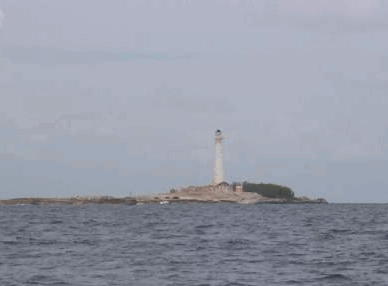 carpet. carpet.
In the deeper areas, little oases of turtle grass grow, creating dark marled areas in the light blue shimmering seas.
But the islands are the true oases here. They are the only points of sure safety, and even their sanctuary has been violated by the mysterious sea around them. In 1969 the two lighthouse keepers of Great Isaac’s Cay vanished without trace. It is a deserted crag now, with the wind howling about its open doors.
But there are even greater mysteries than this. In 1999 an off-duty Coast Guard Petty Officer Bobby 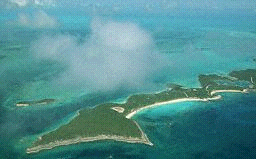 Powell was quietly fishing from his outboard anchored off Andros Island. The water was sparkling and bright. The bottom was only 7 feet below, shimmering through the glasslike sea. When his 14 foot outboard was found his line was still leading over the edge. The bottom sands were velvety smooth, no sign of disturbance. But Powell was missing. Powell was quietly fishing from his outboard anchored off Andros Island. The water was sparkling and bright. The bottom was only 7 feet below, shimmering through the glasslike sea. When his 14 foot outboard was found his line was still leading over the edge. The bottom sands were velvety smooth, no sign of disturbance. But Powell was missing.
Despite the shallow water it is not good to ditch a plane or to be too accessible to the sea. Marine life abounds. Here man is the hunted. Sharks cruise along, barracudas, almost any type of fish looking to kill or feed off the kill.
Sometimes they go on the attack. Barracudas have been known to leap into a boat, fatally bite the occupant and then dive back into the sea. If the victim is mortally wounded the cuda might come back and drag their prey back in, or the first blow might have been enough to knock them over into the sea, into the cuda’s domain where they finish off their victim.
Andros and Bimini, as many Bahama islands, appear orphaned from Florida. 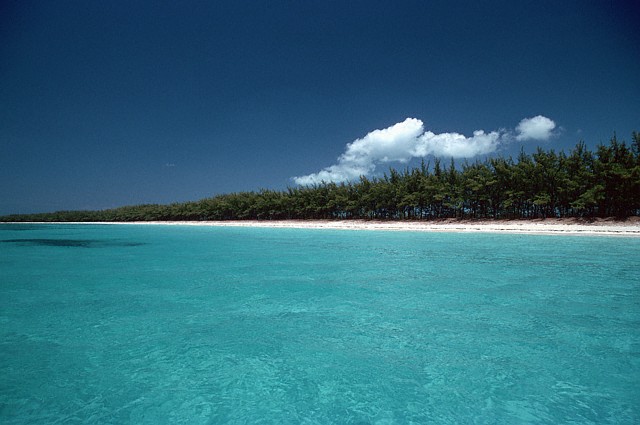 Abundant casuarina trees and older homes give Bimini a summer camp look and Andros, a big, flat island, an outback look. Rustic bars and hotels cater to the loads of game Abundant casuarina trees and older homes give Bimini a summer camp look and Andros, a big, flat island, an outback look. Rustic bars and hotels cater to the loads of game
|
The beauty of off-shore Bimini.
|
fishermen, divers & snorkelers and lend the islands a slightly honky-tonk atmosphere.
But the exotic of the tropics is never far from the Bahama island coasts. The thin waters give us fleeting glimpses of a different, wild world of marine life otherwise invisible in the deeper waters. Sharks flit about. Fish of many colors amble about. Jelly fish glide like free parachutes. Odd geometric patterns are swirled into view by the currents and once again covered by the finicky sands of this odd underwater island. Streaks of strange glowing water, the famous “Glowing Water” of the Bahamas, plume up from vents in the shallow ocean floor, then stop, and vent up somewhere else.
Unusual glowing lights also flit around below. They are particularly prevalent around areas of drop-off, those areas where the sparkling brightness of the shallow waters suddenly goes 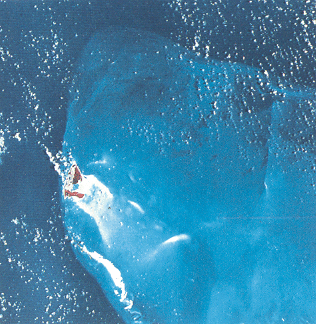 cold and deep blue as the sea floor plunges precipitously to dismal depths. Here they scurry about and vanish. cold and deep blue as the sea floor plunges precipitously to dismal depths. Here they scurry about and vanish.
Compasses mysteriously spin around these spots more frequently. The cause may be the Atlantic Transition Type Geomagnetic Anomaly. A number of scientists have mentioned this in arcane works. It was first discussed in the 1960s; and in a 1993 book Hydridic Earth Russian scientist Dr. Vladamir Larin discusses possible causes.
|
|
|
 |
 |
 |
|
 |
 |
|
Other mysteries exist in the dark Bahama nights and equally dark depths that cast a more menacing aura on the unexplained electromagnetic deviations in the area. Russian authorities have now confessed that during the Cold War their submarines more frequently encountered the fabled USOs— Unidentified Submersible Objects— the undersea cousins of the irascible UFOs we hear so much about.
The Russian confession adds more enigma to the background of vanishing ships and planes that passed over this desert of turquoise waters and were never seen again.
Argue as one might over the cause of missing planes and ships, it is still a fact that the shallow banks contribute to the mystery. It is hard to imagine that scores of planes could have vanished over these same beautiful waters and left no trace. Yet a sensational case is that of a Lake Amphibian. Over the shallow waters of Bimini in 1973, carrying 3 people, it vanished. It was an amphibious plane; it could land and float on water. But what happened? It had vanished utterly. In 1997 a plane temporarily vanished. It was later found only 5 miles southeast of Bimini in a mere 7 feet of water. Yet it took a week to find it. As it stands now, rumors have it the plane was found empty, even the key was removed from the ignition.
These are but minor mysteries of the Bermuda Triangle. Sportsmen, divers, pleasure boaters and conch fishermen, are familiar with the enigmatic wrecks. But mystery delves deeper than casual and passing acquaintance. Greg and Laura Little have frequently wreck-hunted in the area, finding small aircraft and even a DC-3! I was called upon to examine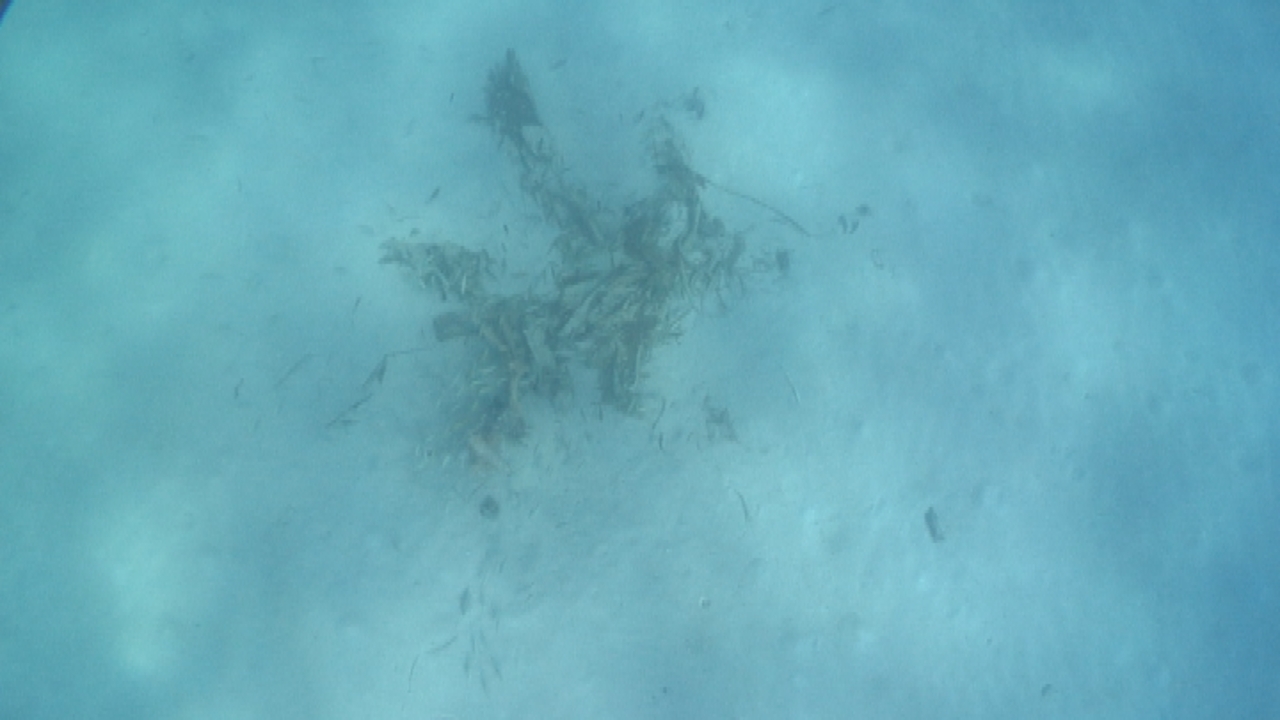 and investigate a couple of these in 2009 to see if either could be linked with those missing in the Triangle. History Channel did a big show around one found 55 miles east of Bimini at the “Eye.” and investigate a couple of these in 2009 to see if either could be linked with those missing in the Triangle. History Channel did a big show around one found 55 miles east of Bimini at the “Eye.”
The “Eye” is not unique, but for our purposes a few chords of ominous music are not out of place here. In the shallow waters of the Bahamas, wrecks eventually attract turtle grass. The “Eye” is the result of an as-yet unidentified wreck, perhaps a Cessna 310, that crashed sometime in the 1970s. The “Eye” looks like a marled area from overhead, some mottled dark green blemish in the cool azure underwater silky sands of the Bahamas.
But where are the dozens of others? Where are the “eyes” that should have been created by all the missing aircraft and vessels that vanished over these shallow waters and left no trace? Even if undiscovered at the time of the initial searches, each should have formed a mottled area of turtle grass with which all local divers would be familiar with. Yet the Triangle swallows all clues, even after decades.
Flights are quick in this island studded area. Mystery must strike swiftly. Engines have flamed out, oil leaks suddenly occur. A search of NTSB records show how commonplace these 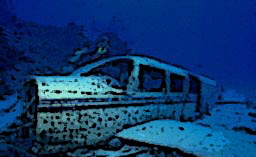 mishaps are. They lead to the obvious and sometimes tragic accident and wreckage. But when something vanishes it is frequently just gone, then and now. mishaps are. They lead to the obvious and sometimes tragic accident and wreckage. But when something vanishes it is frequently just gone, then and now.
The engines of our charter drone on, and one anxiously awaits seeing yachts schooning with a brisk trade wind below. One can’t help but wonder what strikes along this routine sky highway so fast as to tarnish such an exotic, surreal scene.
A twin Beech passed over here in 1976 bound for Caicos; a Piper Cherokee in May 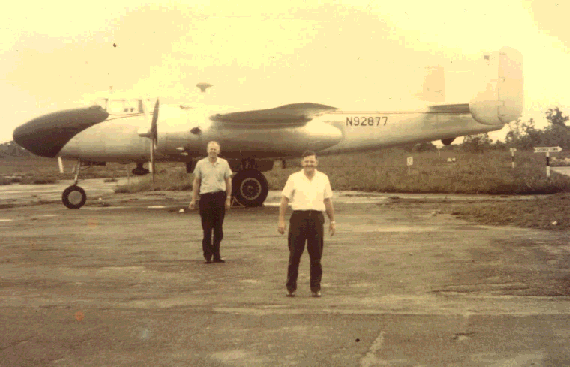 1978; another Cherokee in April 1979; yet again, in September 1979 an Aero Commander 500; A Cessna 402B charter 1984; a big B-25 in 1966 . . . Oh, well, many others. 1978; another Cherokee in April 1979; yet again, in September 1979 an Aero Commander 500; A Cessna 402B charter 1984; a big B-25 in 1966 . . . Oh, well, many others.
Casual conversations on such small planes are common. When the topic of the Triangle comes up . . . if it does . . . I must bite my tongue. I best not mention it to the others. To have figures and facts won’t get you any kudos. Other passengers will just dig their fingers into the upholstery and demand a bathroom.
The topography is silently deceptive. It instills an hypnotic sense of safety. To see the bottom of this lush undersea desert fools one that help may be near. In truth, one is still far out to sea, and many of the Bahamas are deserted crags, primitive outposts, and many times the traffic below is lawless and savage.
Yet none of this can erase wreckage. There should be 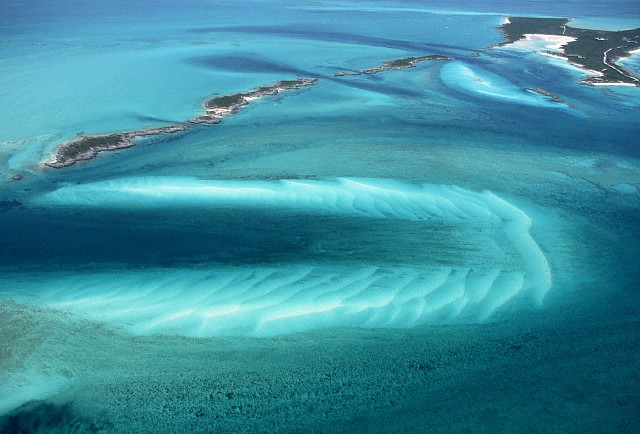 a fleet of ships and plane wrecks below, and yet there is not. Given the topography of the Bahamas, mystery clutches greedily to the Triangle disappearances here more than elsewhere. Why indeed have none left a trace? Even “eyes” have remained closed to the many missing in the Triangle. a fleet of ships and plane wrecks below, and yet there is not. Given the topography of the Bahamas, mystery clutches greedily to the Triangle disappearances here more than elsewhere. Why indeed have none left a trace? Even “eyes” have remained closed to the many missing in the Triangle.
As haunting as it seems, this chilling aura of mystery draws adventurers and sportsmen. The Triangle is a sidelight of the exotic in an already fun-filled trip. People wonder will something truly “triangle-esque” happen to them? Will our compass spin? Will we really see the “electronic fog?” Will those mysterious green lights and glowing waters surface? Will we even see those mysterious USOs reported by both US and Soviet ships?
It is an interesting irony that the ancient mysteries of the Bahamas remain close enough to be seen below the thin crisp waters to greet and amaze modern travelers but frustratingly far removed to explanation. The Bimini Road, the mystic center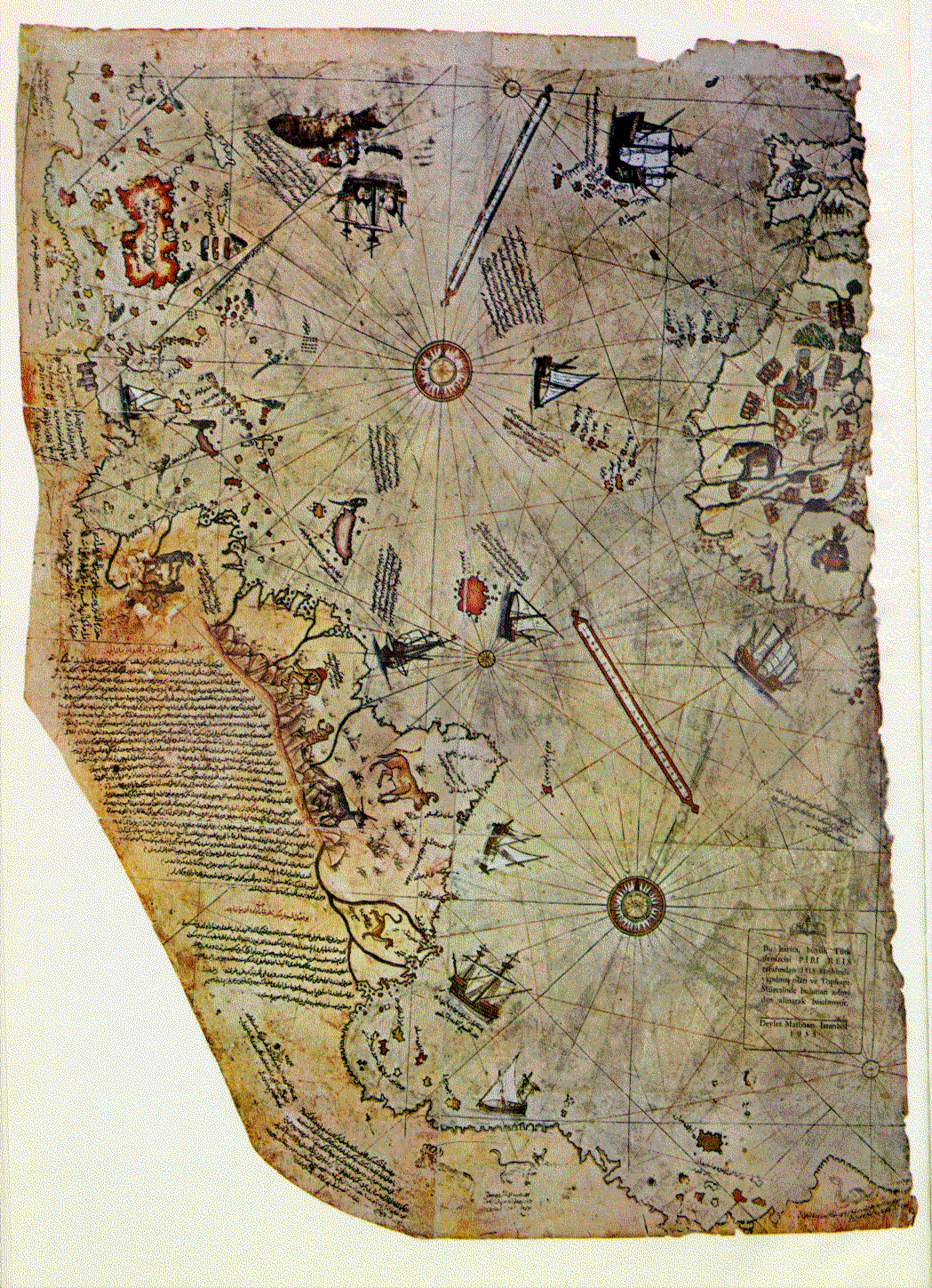 of the Bermuda Triangle, was actually only rediscovered in 1968. Yet it appears in artistic representation on the old Piri Reis Map of 1513, a map long lost and only rediscovered at Topkapi Palace after the fall of the Sultans after World War I. An unidentified island exists in the Bahamas archipelago on the map which is marked by a row of giant polygonal stones. They had so captured the imagination of the cartographer that he used them as the significant landmark of the island. of the Bermuda Triangle, was actually only rediscovered in 1968. Yet it appears in artistic representation on the old Piri Reis Map of 1513, a map long lost and only rediscovered at Topkapi Palace after the fall of the Sultans after World War I. An unidentified island exists in the Bahamas archipelago on the map which is marked by a row of giant polygonal stones. They had so captured the imagination of the cartographer that he used them as the significant landmark of the island.
|
|
|
|
|
|
|
|
Today the Bimini Road awaits divers. You can coast over 1,200 feet of the “J” shaped structure and examine its key stones. There is another line of stones parallel to it and many other structures have been seen now and again over the shallow banks between Bimini and Andros Island.
Amidst this the missing in the Bermuda Triangle have left no trace or wreckage, no “eye” of rusted debris and turtle grass to memorialize their passing.
But of all these enigmas the greatest is yet to come. Traveling along this path brings us to Andros Island and beyond that a geologic oddity like none other in the world— the peculiar Tongue of the Ocean. We cannot divert now, however, We are on a direct line of the Yankee Route to San Juan, Puerto Rico, the third corner of the Bermuda Triangle. Next we encounter some of the unnerving sites in the Triangle— Andros and the Tongue of the Ocean.
|
|